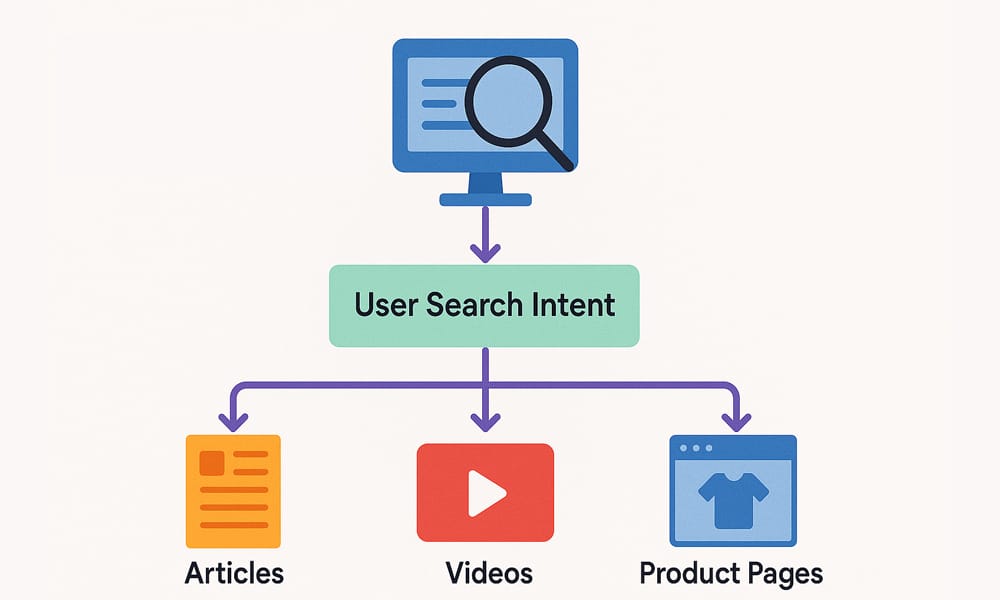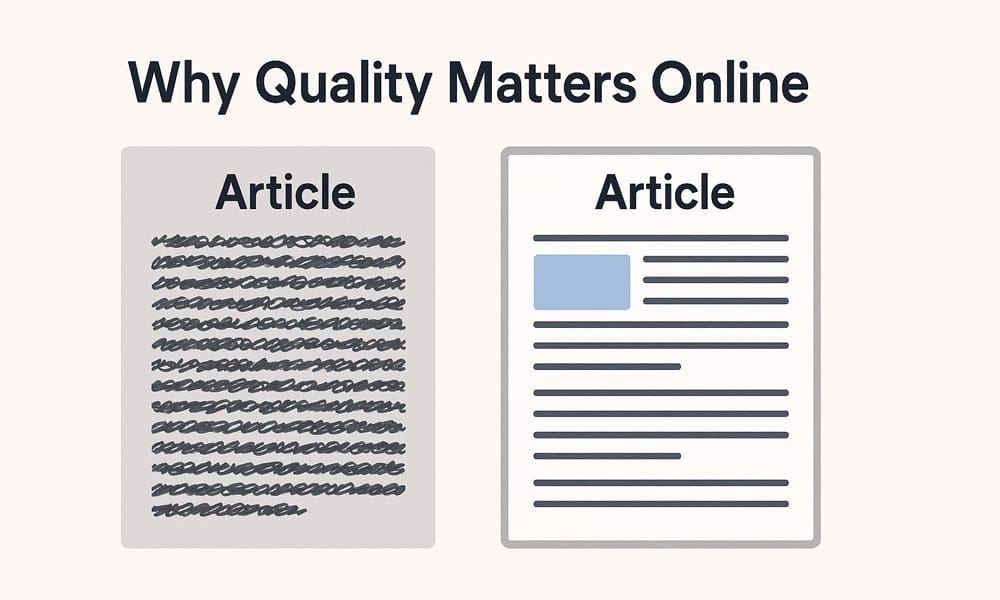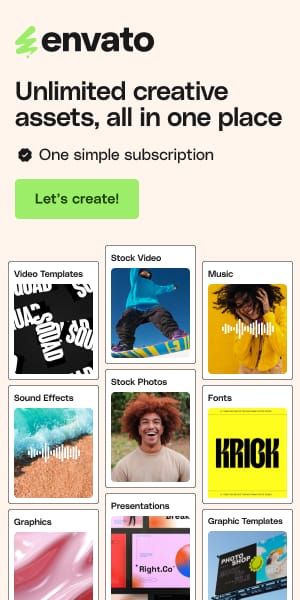Crafting SEO Content That Readers (And Search Engines) Love
Key Takeaways
- Quality SEO content blends human readability with smart optimization.
- Research, credibility, and clarity drive trust, authority, and search visibility.
- Meeting business goals and genuine user interests leads to better engagement and growth.
- Staying on top of trends and evolving algorithms is essential for sustained success in content marketing.
Table of Contents
- What Is SEO Content?
- Why Quality Matters Online
- Elements of Readable SEO Writing
- Balancing Keywords and Natural Flow
- Fact-Checking and Authority
- Common Pitfalls to Avoid
- Emerging Trends in Content Strategy
- Useful Tools and Resources
What Is SEO Content?

Millions of people visit the web daily for answers, advice, and inspiration. SEO content bridges a user’s intent with meaningful, discoverable digital information. Building informative, trustworthy articles, product descriptions, videos, and guides can position a website as a reliable resource within its field. But there is more to SEO than filling a page with keywords and hoping for the best. Highly effective SEO content understands how search engines interpret relevance, authority, and user satisfaction.
Modern digital strategies thrive on a foundation of content that solves problems, educates, or sparks curiosity. Whether you’re a solo business owner, a marketer, or a content creator, choosing to invest in content marketing services can offer a strategic advantage. Experienced marketers use research, audience insights, and technical expertise to shape material that aligns not just with algorithms but also with the needs of real people. The journey from a simple idea to a high-ranking, widely shared piece of content always begins with understanding what the audience truly wants.
Why Quality Matters Online
The online world is just a click away, but earning genuine attention is no easy task. Quality content is an investment with long-term benefits. It’s about going beyond surface-level answers and building trust over time. Almost three-quarters of marketers believe content marketing is more essential than ever. This is mainly because users quickly distinguish between helpful, expertly crafted writing and existing content to fill space.
Top-performing pages rank higher for longer because people share, return, and even link to them from their websites and social platforms. That “stickiness” signals value to search algorithms and helps boost organic rankings. Quality content improves user experience metrics, such as time on page, click-through rates, and conversions, reinforcing trust and search placement. In a world where algorithms are increasingly sophisticated, putting reader value first is a winning strategy.
Elements of Readable SEO Writing
- Short, focused paragraphs : Online readers prefer easy-to–sc scan content. Keeping paragraphs concise ensures that information is digestible and less intimidating.
- Clear subheadings and organization : Subheadings break up content and help readers (and search engines) quickly identify essential topics, allowing users to jump straight to the information they need.
- Burstiness in sentence structure : Mixing short, impactful sentences with longer, more detailed ones keeps the writing lively, prevents monotony, and makes articles more engaging.
- Active voice : Using active voice leads to sentences that are easier to understand, while passive constructions can make writing sound dull or ambiguous.
- Visual variation : Bullet points, numbered lists, and strategic whitespace allow readers to rest their eyes and digest information in manageable chunks.
Users rarely read web pages word by word; instead, they scan for headlines, bolded words, or lists that catch their attention. Readers consume only about 20% of the textual content on a typical visit. Effective content structure isn’t just about presentation—it’s about guiding the user’s journey through the page to maximize value and learning.
Balancing Keywords and Natural Flow

There is a fine line between optimizing for search engines and maintaining a natural, engaging writing style. Keywords remain a powerful tool for connecting user queries with content, but over-optimization can damage readability and rankings. The best results come from writing for real users. Integrating keywords should feel effortless, like seasoning that brings out the best flavors in a dish rather than overwhelming it.
Start by understanding your audience’s core questions and pain points. Imagine how they phrase a search, then frame your answers in naturally resonating language. Placing key phrases in headings and introduction sentences within the narrative can fulfill user needs and search intent. Frequently, the best SEO content reads as if it were crafted without keywords in mind, even though its structure follows best-practice optimization.
Fact-Checking and Authority
In today’s era of information overload, accuracy is a crucial differentiator. Readers gravitate to sources that feel reliable and well-researched. Supporting your claims with data, expert opinions, and links to authoritative sources can make the difference between skimmed and bookmarked content. For instance, referencing established research or institutions, like government agencies, helps validate your messaging. Fact-checking becomes especially important for industries where trust and accuracy are paramount—finance, health, science, or education.
Continuously updating posts to reflect new knowledge, citing recent statistics, and even incorporating perspectives from recognized thought leaders are all strategies that increase user trust and domain authority. When content consistently delivers on accuracy and integrity, it earns favor with both human readers and search bots, ultimately driving recurring visitors and higher rankings.
Common Pitfalls to Avoid
- Overusing jargon : Industry-specific language can create a barrier for new visitors, alienating a wider potential audience.
- Misleading or clickbait headlines : Tempting as it may be, sacrificing substance for catchy headlines often backfires with higher bounce rates and diminished trust.
- Letting content go stale : Outdated posts can hurt domain reputation and miss opportunities for fresh engagement or ranking improvements. Regular reviews and updates matter.
- Neglecting mobile optimization : With most searches on mobile devices, poor formatting or oversized images can frustrate users and send them elsewhere.
Adopting a reader-first mindset—regularly soliciting feedback and analyzing interaction data—can help surface blind spots and areas for improvement. The web rewards flexibility and evolution just as much as it rewards expertise.
Emerging Trends in Content Strategy

The landscape of SEO content continues to evolve at a breakneck pace. AI-driven tools allow brands to produce and personalize content at scale, speeding up editorial workflows and opening new avenues for creativity. But while technology offers speed and efficiency, the human element provides true resonance. Storytelling, empathy, and unique perspectives help transform surface-level material into unforgettable user experiences.
Visuals, such as explainer videos, custom graphics, and interactive infographics, are becoming integral to keeping audiences engaged. The increased importance of user experience factors—like page speed, accessibility, and multimedia integration—signals that content strategy is now equal parts technical and creative. Staying tuned into industry updates and shifts in user behavior will determine long-term success.
Useful Tools and Resources
- Grammar and readability tools : Solutions like Grammarly and Hemingway Editor help polish prose and ensure clarity, which is invaluable in a crowded digital marketplace.
- Analytics platforms : Google Analytics, Search Console, and other data-driven tools allow you to measure actual results, monitor traffic patterns, and set measurable goals.
- Keyword discovery and tracking : Utilizing research tools lets you find trending topics and fill knowledge gaps in your existing content lineup.
- Editorial planning systems : Keeping a detailed publishing calendar ensures consistency, helps manage resources, and can uncover seasonal content opportunities.







